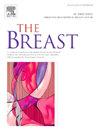Development and validation of a 10-gene signature for predicting recurrence risk in HR+/HER2- early breast cancer undergoing chemo-endocrine therapy
IF 5.7
2区 医学
Q1 OBSTETRICS & GYNECOLOGY
引用次数: 0
Abstract
Background
While existing multi-gene assays aid adjuvant treatment decisions, no gene signature has identified HR+/HER2- early breast cancer (EBC) patients at high recurrence risk post-chemo-endocrine therapy (C-ET).
Methods
Clinical data and RNA sequencing information from 1457 HR+/HER2- breast cancer patients were collected from West China Hospital, the GEO database, and the TCGA database. Using univariate Cox regression, gene set enrichment analysis, and LASSO regression, ten key genes associated with recurrence were identified. A comprehensive prognostic model was developed by combining the 10-gene risk score with clinicopathological features, and a nomogram was created to predict 3-, 5-, and 7-year recurrence-free survival (RFS). The model's performance was evaluated using AUC and decision curve analysis (DCA).
Results
The 10-gene risk score was significantly associated with recurrence risk of HR+/HER2- EBC after C-ET and effectively distinguished between high-risk and low-risk patients (training: HR: 6.37, P < 0.001; validation: HR: 4.51, P < 0.001). It maintained consistent stratification efficacy across different treatment regimens, clinical stages, and grades. Compared to existing multi-gene signatures (21-gene, 70-gene, EndoPredict, PAM50, GGI), HR+/HER2- EBC patients identified as high-risk by the 10-gene risk score exhibited a higher 10-year cumulative recurrence rate following C-ET. In multivariate Cox regression analysis, the 10-gene risk score remained an independent prognostic factor in both the training and validation sets. The comprehensive model, integrating the 10-gene score and clinicopathological features, showed high predictive accuracy (AUC: 0.734, 0.778, 0.792 for 3, 5, 7 years in training; 0.691, 0.715, 0.709 in validation).
Conclusion
The 10-gene risk score can serve as a tool to predict recurrence risk in HR+/HER2- EBC patients following C-ET, assisting clinicians in developing personalized treatment plans for high-risk patients and ultimately improving patient prognosis.
开发和验证10基因标记预测化疗-内分泌治疗的HR+/HER2-早期乳腺癌复发风险
虽然现有的多基因检测有助于辅助治疗决策,但没有基因标记识别出化疗-内分泌治疗(C-ET)后高复发风险的HR+/HER2-早期乳腺癌(EBC)患者。方法收集华西医院、GEO数据库和TCGA数据库中1457例HR+/HER2-乳腺癌患者的临床资料和RNA测序信息。通过单变量Cox回归、基因集富集分析和LASSO回归,确定了10个与复发相关的关键基因。通过将10个基因风险评分与临床病理特征相结合,建立了一个综合预后模型,并创建了一个nomogram来预测3年、5年和7年的无复发生存期(RFS)。采用AUC和决策曲线分析(DCA)对模型的性能进行了评价。结果10基因风险评分与C-ET术后HR+/HER2- EBC复发风险显著相关,可有效区分高危和低危患者(训练:HR: 6.37, P <;0.001;验证:HR: 4.51, P <;0.001)。它在不同的治疗方案、临床分期和分级中保持一致的分层疗效。与现有的多基因特征(21基因、70基因、endoppredict、PAM50、GGI)相比,通过10基因风险评分确定为高风险的HR+/HER2- EBC患者在C-ET后的10年累积复发率更高。在多变量Cox回归分析中,在训练集和验证集中,10基因风险评分仍然是一个独立的预后因素。综合10个基因评分和临床病理特征的综合模型在训练3、5、7年的预测准确率(AUC)分别为0.734、0.778、0.792;验证值为0.691,0.715,0.709)。结论10基因风险评分可作为预测HR+/HER2- EBC患者C-ET术后复发风险的工具,帮助临床医生制定针对高危患者的个性化治疗方案,最终改善患者预后。
本文章由计算机程序翻译,如有差异,请以英文原文为准。
求助全文
约1分钟内获得全文
求助全文
来源期刊

Breast
医学-妇产科学
CiteScore
8.70
自引率
2.60%
发文量
165
审稿时长
59 days
期刊介绍:
The Breast is an international, multidisciplinary journal for researchers and clinicians, which focuses on translational and clinical research for the advancement of breast cancer prevention, diagnosis and treatment of all stages.
 求助内容:
求助内容: 应助结果提醒方式:
应助结果提醒方式:


